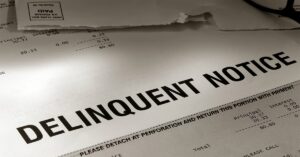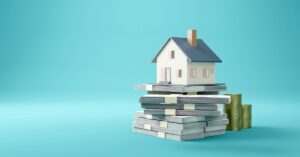When Freddie Mac and Fannie Mae introduced green mortgages for multifamily properties several years ago, the offerings initially attracted limited interest. That has changed in the past couple of years, however.
The government-sponsored enterprises (GSEs) are seeing strong demand for green loans on apartment buildings that offer energy- and water-related efficiencies. Now, both Freddie and Fannie have developed green mortgages for the single-family residential market.
Freddie’s program, which will be available this spring, is called GreenCHOICE Mortgages. Fannie’s program is called HomeStyle Energy. These mortgages are designed to help the lending community, construction industry and homeowners, said Mike Dawson, a vice president in charge of developing affordable products and strategies for Freddie Mac.
Although the remodeling boom is expected to cool this year, the overall trend is for homeowners to spend more on home renovations over the next couple of decades. Freddie Mac’s program will support that, Dawson said.
“Our GreenCHOICE offering is providing a financing vehicle that’s going to help [homeowners] put a little extra money in the home, plus enjoy the benefits of more efficient homes and hopefully reduce their utility costs and other costs associated with homeownership,” Dawson said.
Dawson discussed GreenCHOICE Mortgages and the program’s place within the mortgage industry with Scotsman Guide.
How does the GreenCHOICE Mortgage work?
It provides the homeowner the ability to finance energy-efficient improvements, whether it be through purchase or refinance of an existing home. The opportunity for the individual is if you’re looking to buy an older home and you’re looking to add some energy-efficiency features to it, or you’re looking to improve the comfort and safety of your current home for those who are doing a refi.
What types of improvements does this include?
Those can include sealing of gaps around windows, doors, etc. It could be in the form of energy-efficient water heaters or other features. It could be providing thermostats and other features that improve the energy efficiency and livability of the home itself.
Do you have an idea of whether it will be popular program?
We wouldn’t have put it out there if we hadn’t gotten significant feedback that this was an offering that will fill a need. … There is going to be a need for this type of financing. There’s going to be a need for renovation financing, just based on the lender feedback we’re getting.
When did you launch this?
It came out Nov. 13, 2018. It’s going to be available May 1, 2019.
Are there any requirements?
If the improvements are less than $6,500, an energy report is not needed. If the improvements are greater than that, we’re going to require an energy report, an energy survey to ensure that any energy improvements are going to make a difference from a homeowner’s perspective. We’re going to offer a $500 credit to the homeowners to offset some of the costs of that energy-efficiency survey or rating.
How does this fit into Freddie Mac’s core mission?
[The question is], how are we developing with our lender partners offerings that will meet the needs of today’s and future borrowers, and the future needs of the housing market overall? It fits very nicely with the overall business of Freddie Mac. Certainly, from a community-mission standpoint for Freddie Mac, it’s helping those individuals particularly in the low- and moderate-income sector, and underserved markets. It provides them with opportunities to deleverage a little bit in the form of utility savings.
With the Trump administration resisting efforts to combat climate change, how does Freddie Mac install these programs while navigating its relationship with the federal government?
Our focus is providing competitive financing offerings to our lenders to help the individual homeowner.
Do you have anything else to add?
We’re always open to new ideas and offerings that will support the consumer. That includes working through the lender community in the form of providing competitive offerings, in this case through energy offerings and renovation capabilities that hopefully will make that home a little more affordable, a little safer and a little cheaper to own.







